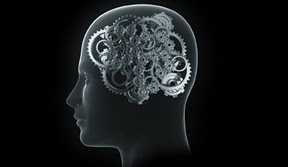Brain science shows there are differences between consciousness in wakefulness, sleep, deep anesthesia and a coma. The distinctions can guide talent leaders to create more conscious organizations.
Giulio Tononi, a chairman in consciousness at the University of Wisconsin, measures consciousness levels. For an experiment, Tononi and colleagues placed a net of small magnetic coils on volunteers’ heads. The coil can deliver a burst of magnetism lasting one-tenth of a second to one small part of the brain, causing the neurons there to fire, then tracks the reaction in other parts of the brain.
In conscious brains for awake and sleeping volunteers, the brain reverberates like a ringing bell, with neurons firing in a complex pattern across large areas for 295 milliseconds. However, in volunteers who were under anesthesia, the reverberations were limited to a much smaller region and only lasted about 100 milliseconds. As anesthesia wore off, the pulses produced richer and longer echoes of the original stimulation. In other words, a larger connection of integrated signals is a consciousness hallmark.
Yet consciousness is more than just lots of connected firing. Tononi and colleagues note that during an epileptic seizure, brain waves are hyper-synchronized, with large areas of the brain firing together, and seizures result in unconsciousness, not hyper-consciousness. To further study this, Tononi turned to information system engineering, and discovered the concept “phi,” which measures how much distinctive and integrated information is contained in a system.
If a system has lots of isolated parts, phi is low because the parts cannot share information. However, simply linking all the parts in lockstep doesn’t raise phi much if all the parts switch on and off together, because there’s not much information in the system. The highest phi occurs when network parts are organized into separate clusters and then joined. The hyper-synchrony of an epileptic seizure reduces consciousness by actually reducing the number of information states the brain can be in, even though a larger proportion of the brain is active. The most conscious system is where there are lots of specialists who can talk to each other effectively so the amount shared and integrated in the network is high.
Less conscious organizations may isolate activity in one part of the organization, but even widespread organizational activity will not enhance consciousness if it is too heavily coordinated in lockstep or groupthink. In Transformative HR, Ravin Jesuthasan and I showed examples where synergy — when HR processes and organizational units reinforce each other — is even more important than individual unit excellence, producing the effect of “one plus one equals three.” Chris Worley at the Center for Effective Organizations has suggested that organizational agility requires broad surface area of employees and contacts that sense and respond to a changing environment, and a consistent, lasting core identity.
But how do you distinguish between the chaos of agility everywhere and more deliberately raising consciousness? Like the notion of phi in brain science and information technology, raising organizational consciousness is about optimizing environmental sensitivity and organizational activity with integration. Talent leaders need to create more organizational innovation and sensing, as well as the right amount of sharing and coordination.
Talent systems typically focus on top leaders as pivotal to agility, strategy and innovation. However, a 2008 article in the Journal of Management by William Wooldridge, Torsten Schmid and Steven Floyd provides a compelling review of the evidence about why middle managers are pivotal. Traditionally we think that top leaders formulate strategy and middle managers execute strategy, but the research suggests that middle managers have important roles in distilling ideas from below to inform strategy, in being champions who generate enthusiasm at lower levels and in laterally connecting organization units that must work together. This sounds a lot like those optimally coordinated neurons in the conscious brain.
Is your organization unconscious, hyperactive or optimally conscious? Can your talent systems take a lesson from brain science to combine just the right amount of agile activity with the essential amount of coordination and connection?
John Boudreau is professor and research director at the University of Southern California’s Marshall School of Business and Center for Effective Organizations, and author of Retooling HR: Using Proven Business Tools to Make Better Decisions about Talent. He can be reached at editor@talentmgt.com.















